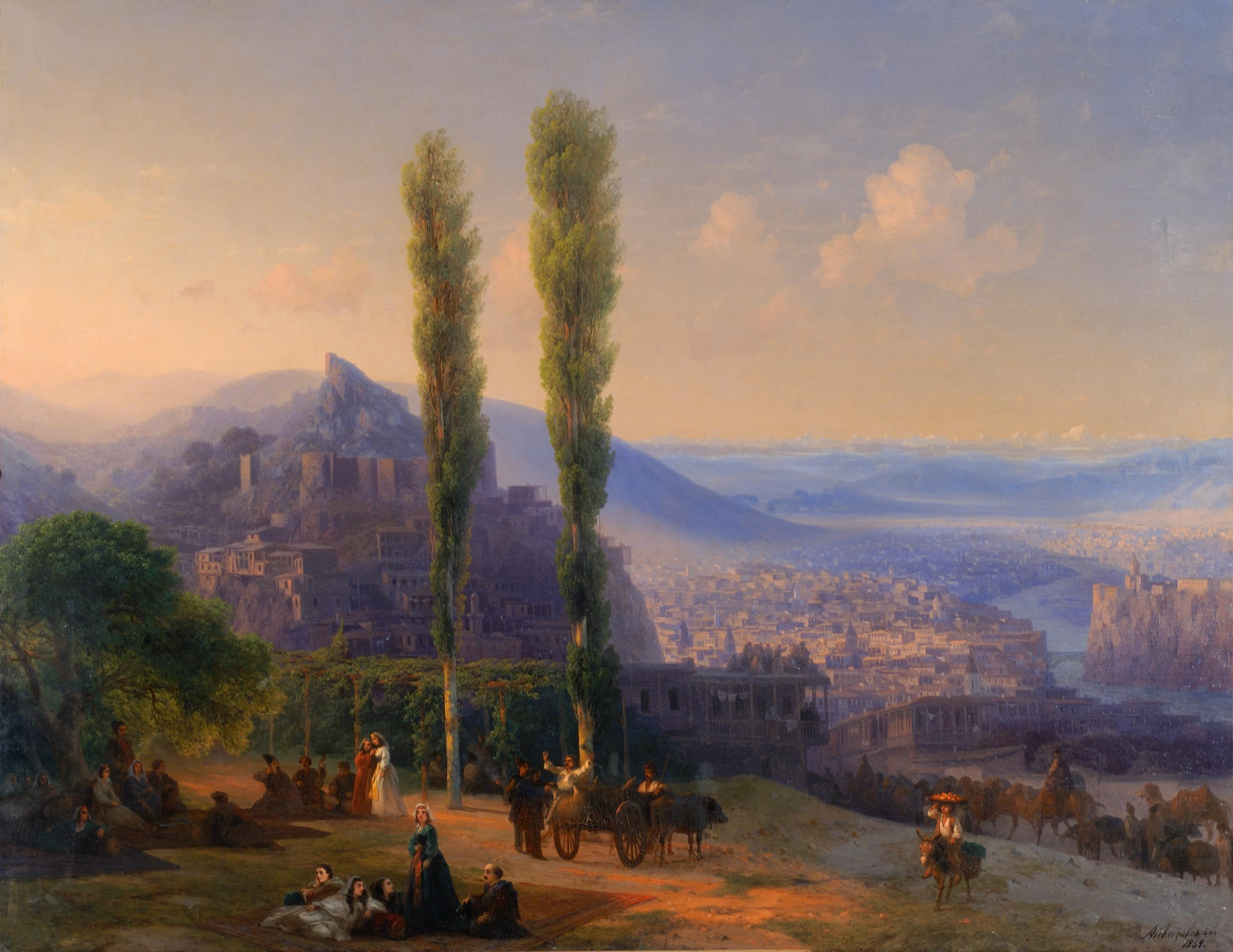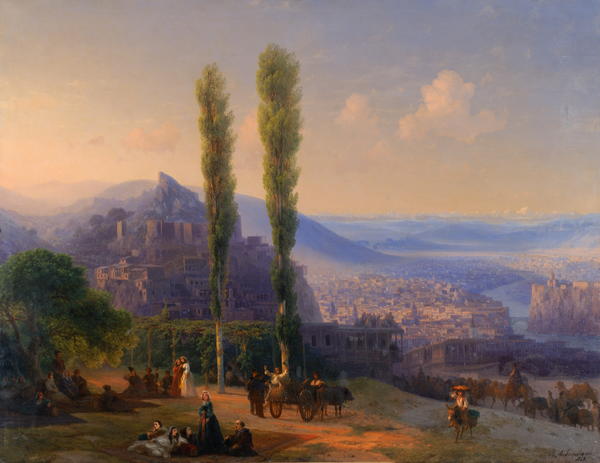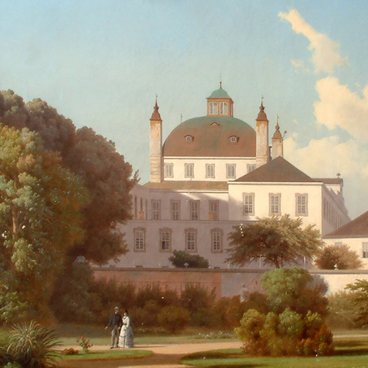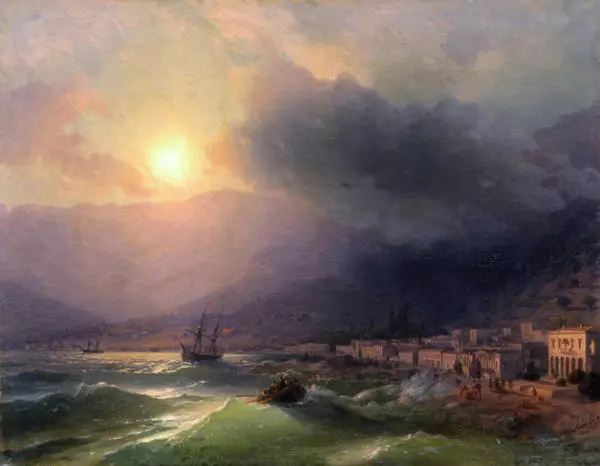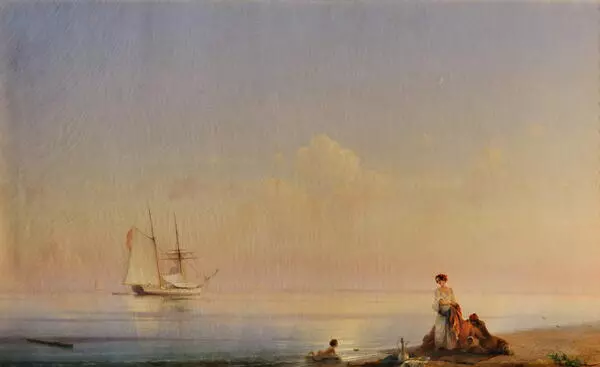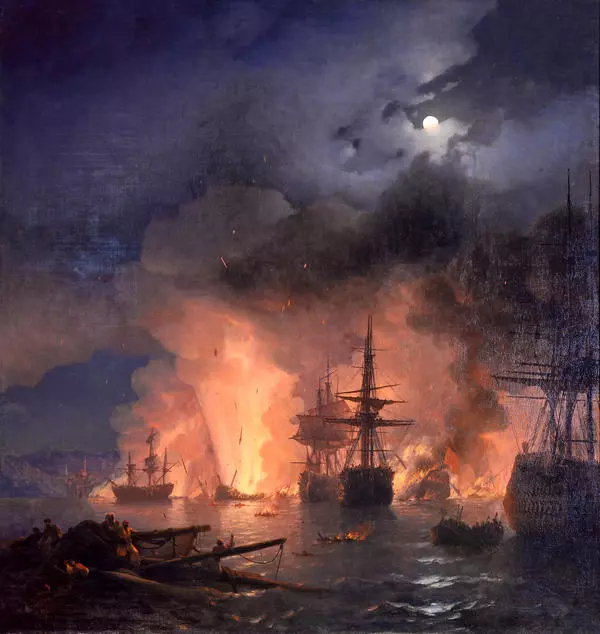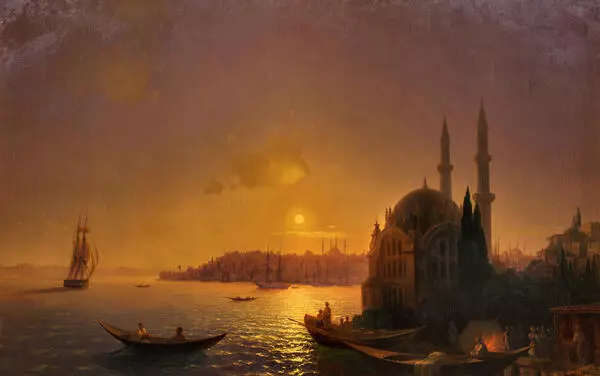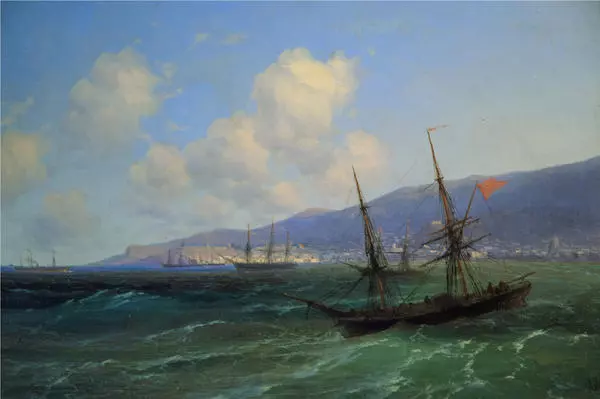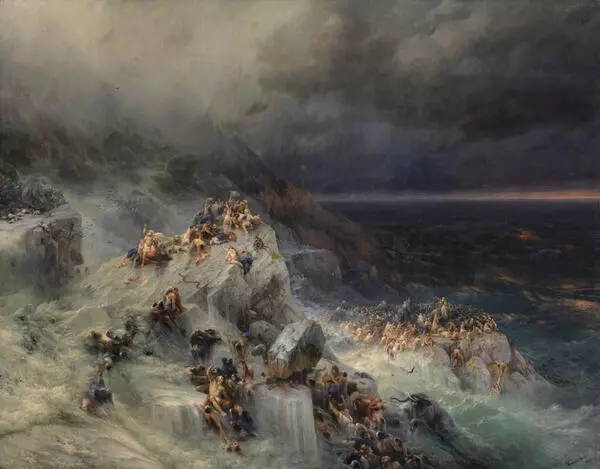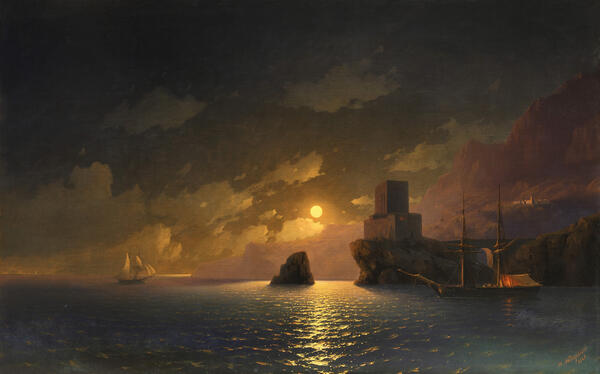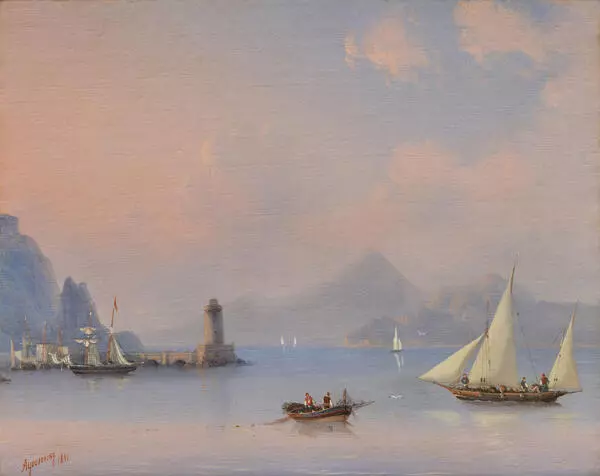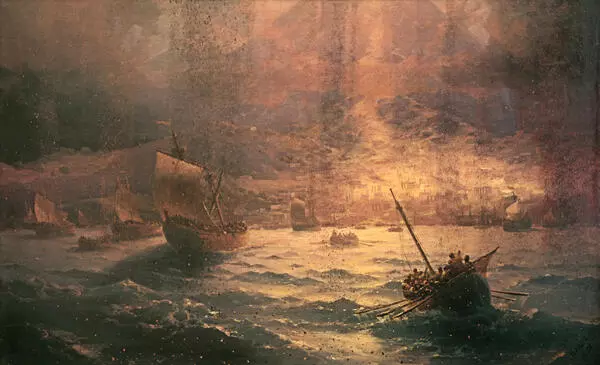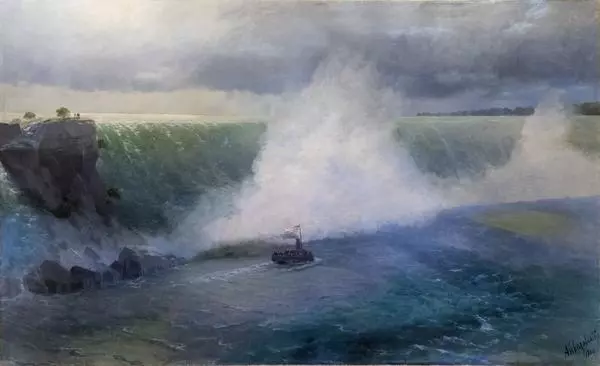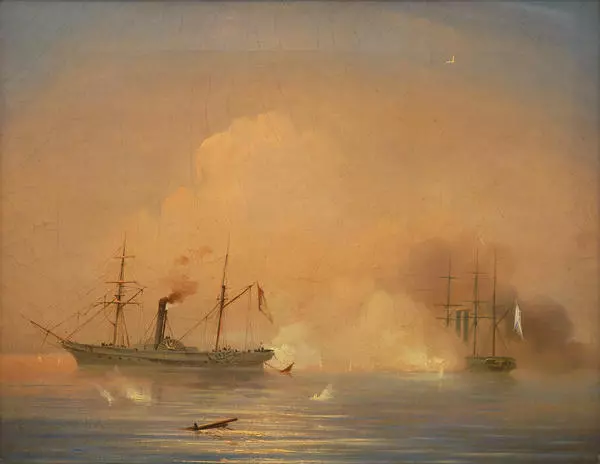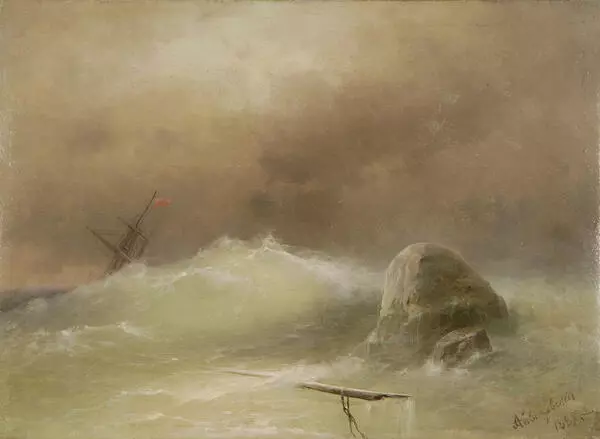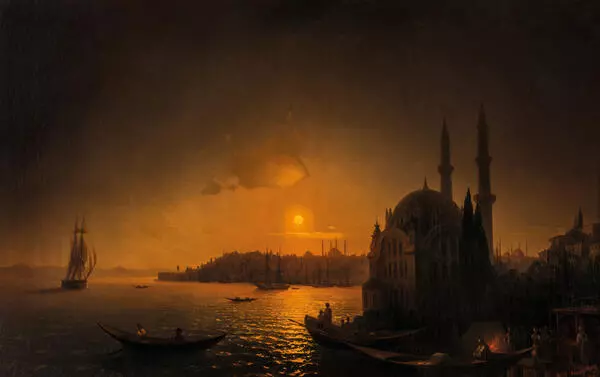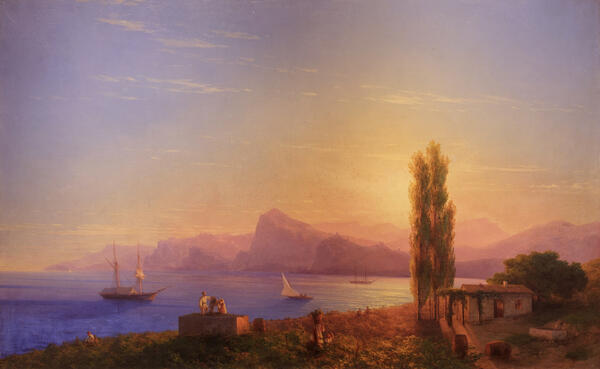The collection of the Stavropol Museum of Art includes two paintings by famous Russian marine painter Ivan Aivazovsky. One of these paintings is a rare land landscape depicting the view of Tiflis. The artist created it in 1869 impressed by his trip to the Caucasus.
In 1869, Aivazovsky visited the foothills of the Caucasus, the Daryal gorge, aul Gunib. The trip ended in Tiflis, where the artist stayed at the house of Gabriel Tamamshev, one of the prominent Armenian public figures of the time, an honorary citizen of Tiflis and Stavropol.
For two months, Aivazovsky painted 12 large paintings based on the drawings of the ‘Caucasian Album’. Among them was a panoramic view of Tiflis. The sketches in this album were more detailed than the usual travel drawings of the artist, in the margins of the drawings Aivazovsky wrote the names of auls and colors of landscapes.
Aivazovsky did not write from life, he always relied on his phenomenal visual memory. The artist worked quickly and almost did not redo what he had started. The picture was formed in the imagination, which allowed Aivazovsky to maintain the freshness of perception, the unity of color and integrity of the image in the finished work.
By creating the View of Tiflis, the artist aims to be accurate. Architectural monuments remain recognizable - the painting shows the fortress of Narikala, the Metekhsky temple. A series of mountain ranges in blue haze, going far away, opens up a distant perspective on the barely noticeable white chain of mountains of the Caucasus range.
Aivazovsky added several genre scenes to the landscape, reflecting the life of the people. These are women dancing on the flat roof of the house - an ancient custom that has survived in the villages of Armenia and Georgia to this day, a caravan of camels walking through the town, a merchant with a basket of fruit on his head, who rides on a donkey. A few people are talking near the ox-carried cart, a tall two-wheeled cart. In the foreground and a little bit away in the shade of trees on the carpets laid out on the ground there are resting groups of men and women.
Tiflis by Aivazovsky is romantically picturesque, but retains the solemnity of a classic work. The painting shows the city as it was perceived and described by many of the author’s contemporaries.
In 1869, Aivazovsky visited the foothills of the Caucasus, the Daryal gorge, aul Gunib. The trip ended in Tiflis, where the artist stayed at the house of Gabriel Tamamshev, one of the prominent Armenian public figures of the time, an honorary citizen of Tiflis and Stavropol.
For two months, Aivazovsky painted 12 large paintings based on the drawings of the ‘Caucasian Album’. Among them was a panoramic view of Tiflis. The sketches in this album were more detailed than the usual travel drawings of the artist, in the margins of the drawings Aivazovsky wrote the names of auls and colors of landscapes.
Aivazovsky did not write from life, he always relied on his phenomenal visual memory. The artist worked quickly and almost did not redo what he had started. The picture was formed in the imagination, which allowed Aivazovsky to maintain the freshness of perception, the unity of color and integrity of the image in the finished work.
By creating the View of Tiflis, the artist aims to be accurate. Architectural monuments remain recognizable - the painting shows the fortress of Narikala, the Metekhsky temple. A series of mountain ranges in blue haze, going far away, opens up a distant perspective on the barely noticeable white chain of mountains of the Caucasus range.
Aivazovsky added several genre scenes to the landscape, reflecting the life of the people. These are women dancing on the flat roof of the house - an ancient custom that has survived in the villages of Armenia and Georgia to this day, a caravan of camels walking through the town, a merchant with a basket of fruit on his head, who rides on a donkey. A few people are talking near the ox-carried cart, a tall two-wheeled cart. In the foreground and a little bit away in the shade of trees on the carpets laid out on the ground there are resting groups of men and women.
Tiflis by Aivazovsky is romantically picturesque, but retains the solemnity of a classic work. The painting shows the city as it was perceived and described by many of the author’s contemporaries.
